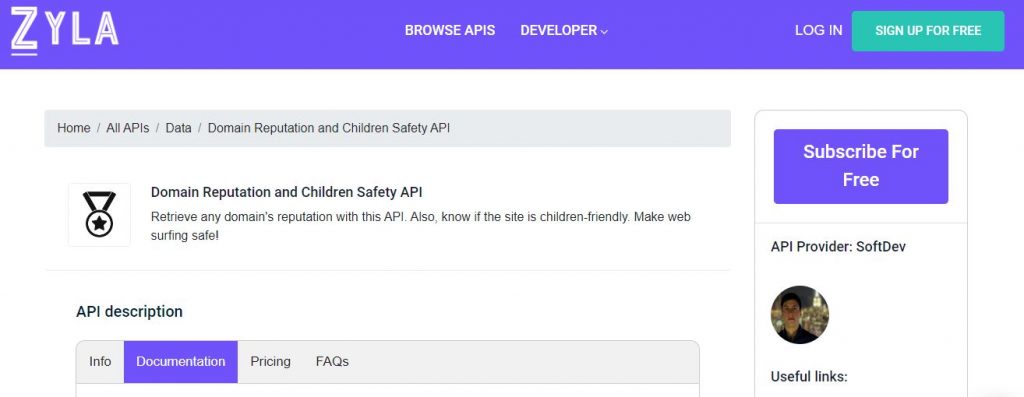Are you looking for a tool to secure your company’s network? If that is your case, make your web surfing safe with this easy to use API! In this article, we will tell you everything about how to enhance your company´s network and how to use a content safety API as well.
More and more companies are looking at the protection of their internal networks when it comes to enabling web browsing on the computers of their human resources. This is due to the dangers to which companies’ operating systems and information are exposed.
Therefore, it is advisable to use a domain score API to build a list of unsafe websites to ban and to make your website surfing safe. With the help of these APIs, you may determine with certainty whether a website is secure and receive a confidence rate. This will assist you in determining what limitations to impose on the network of your business in order to safeguard your data and system.
Simply put, these APIs can provide you with entire lists of sites that should be blocked from your company’s computers and devices. But it will also provide you with information about the categories in which your site is listed, so you can check that you are appearing in the right places for search engines.

You can make a good use these APIs to evaluate the security of your own website. The categories it belongs to and whether its content is appropriate and deemed safe by search engines can both be determined via domain confidence APIs.
They do this by using sophisticated procedures. The WHOIS data of a domain, name server configurations, IP address infrastructure, SSL connections made by the target domain, SSL certificates, DNX MX record setup, associated mail server configuration, and the outcomes of a reverse IP lookup are all examined.
You don’t need to be a programming expert to use these domain APIs, despite the fact that it could look complicated. There are a number of options available, like Clearbit and URL-Classification, but we’ll suggest the easiest to use, the most affordable and most comprehensive one here.
What Is The Best Domain API Available?

So, in order to assist you in checking the security state of any website and to protect your company network, we will suggest the most reliable API available in 2022: the Children Safety And Domain Reputation API, on the Zyla API Hub.
By using a search engine, you can quickly determine whether a website is safe and secure. On the other side, this API might help you stay away from scams and offensive websites. As a result, this API is highly suggested for improving security at all levels, but especially to enhance the security of the visitors of your site.
The confidence level, which ranges from 1 to 100, the kid safety level, which also ranges from 1 to 100, and the safety status—which in a secure domain signals “safe”—will all be recovered. You will also be given a confidence score and a list of categories so that you can quickly determine if URLs contain explicit or illegal content.
How To Use This
The Domain Reputation and Child Safety API is the easiest and fastest to use. You just need to make a few clicks in order to find out what the confidence score of a site is. In this part, we’ll demonstrate how to assess the security of any domain using this software.
- Choose the Domain Reputation and Children Safety API from the Zyla API Hub.
- Create an API Key and verify your human status.
- Enter the URL being investigated and analyzed.
- Analyze the results to determine which domains need to be blocked.
You already know everything you need to ensure that your employees’ online browsing does not breach your company’s security. We have told you how to make your website surfing safe and presented to you the most reliable confidence score API available in 2022. Add it to your company’s routine and stop worrying about its security!

